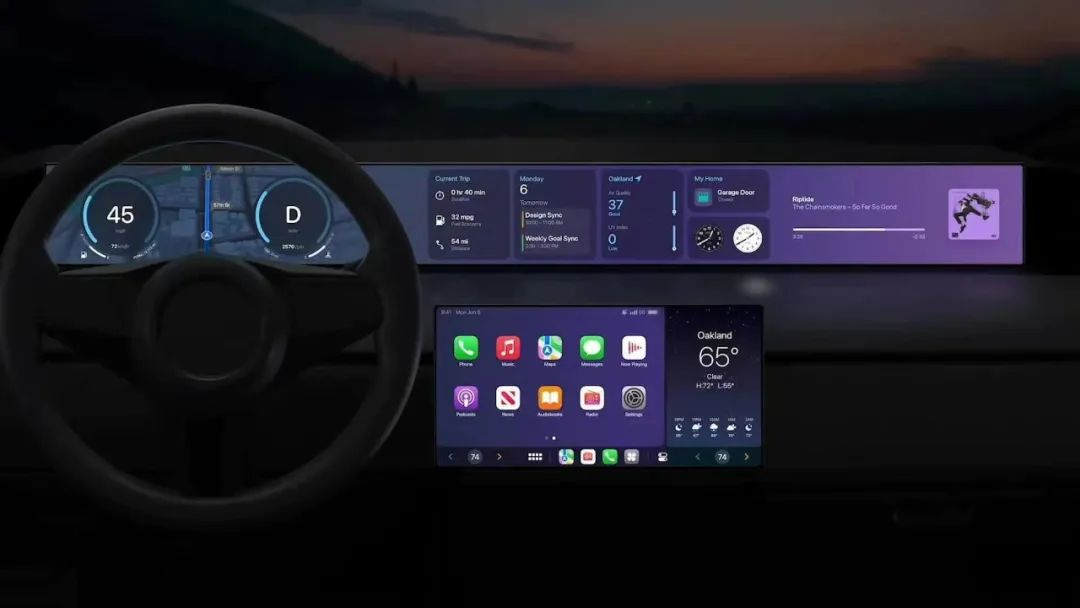Author: Mr.Yu
Last night, Apple’s WWDC22 went live as scheduled.
Do you remember last year when a friend jokingly said that NIO Day in December was the “Spring Festival Gala” of the car circle? Speaking of which, Apple’s annual fall product launch event also has a reputation as the “Spring Festival Gala” of the tech industry. In this sense, Apple Worldwide Developers Conference (WWDC) in the summer has a hint of celebrating a small New Year for developers, technology enthusiasts, and media alike.
Compared to the grandiose slogans of previous years such as “One year later, light years ahead” or “A whole new world is developing,” this year’s slogan “Code one, code all” returns to the cool geek atmosphere.

What’s new in Apple’s updated CarPlay?
The three-and-a-half-minute Apple automotive business video started with a bang. Emily Schubert, Senior Manager of the Apple Car Experience Engineering, kicked off with a set of numbers that left us stunned.
“Nearly 98% of cars in the U.S. are compatible with CarPlay, and 79% of American consumers say they would only consider buying a car that supports CarPlay.”
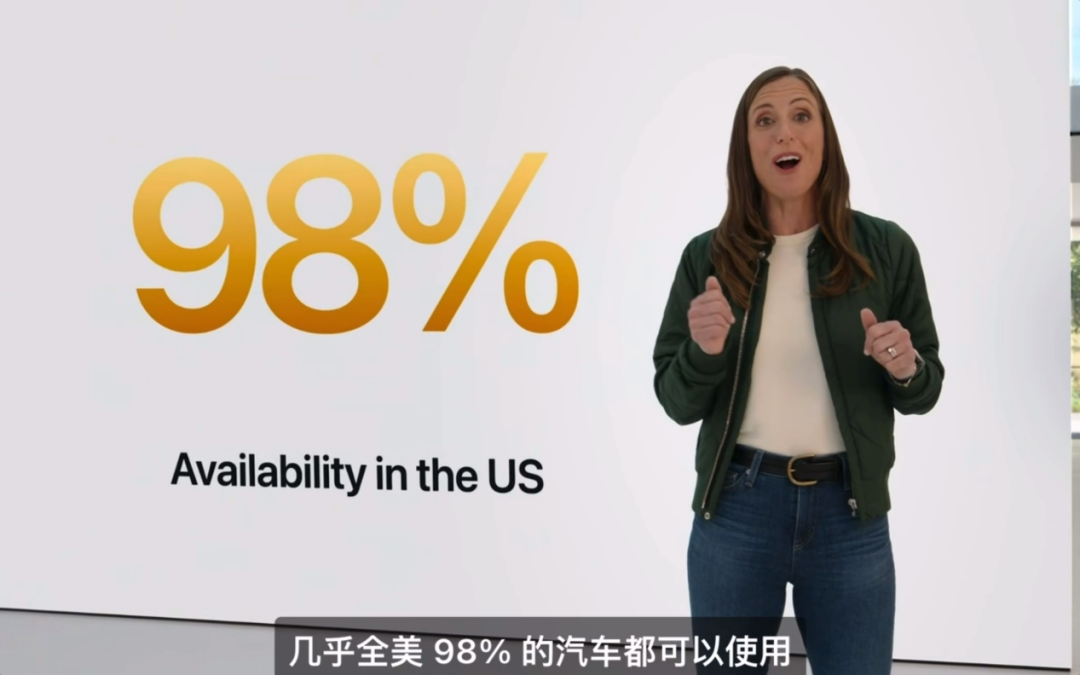

While marveling at CarPlay’s astonishing market share and user penetration rate, Emily Schubert’s expression when presenting these numbers reminded me of the hosts of shopping programs on American TV that I watched in documentaries when I was a child.
As a multinational tech giant based in the United States, the appearance of these numbers in the video reflects something akin to the Korean call for “self-reliance through the use of domestic products” that has been shouted by the Korean people for decades, meaning to support domestic brands with practical actions filled with patriotic enthusiasm.
Back to the topic.
CarPlay is undoubtedly a groundbreaking product. In the past, it projected navigation, entertainment, communication, and other functions and applications from smartphones onto the car’s touch screen. For those users who equate “car intelligence = smartphone + stand,” these functions are almost sufficient.
Convenient as it may be, today we’re looking at the obvious shortcomings of the old version of CarPlay. It is merely a mapping of a smart mobile network connection device onto the car screen, and cannot support vehicle functions. Its ecosystem is also limited to what Apple can provide.

One of CarPlay’s long-standing problems is its unfriendly display ratio. Based on our experience, even on portrait-oriented car systems that support running it, CarPlay stubbornly sticks to a horizontal display.
With the update, CarPlay can better adapt to screens of various shapes and ratios on both the dashboard and central control screen, displaying itself on the screen. This is undoubtedly good news for car owners with various multi-screen or irregular screens.
Apple’s visual design has always been an industry benchmark. Over the years, whether it’s peer imitation or designer pursuit, this has been beyond doubt.
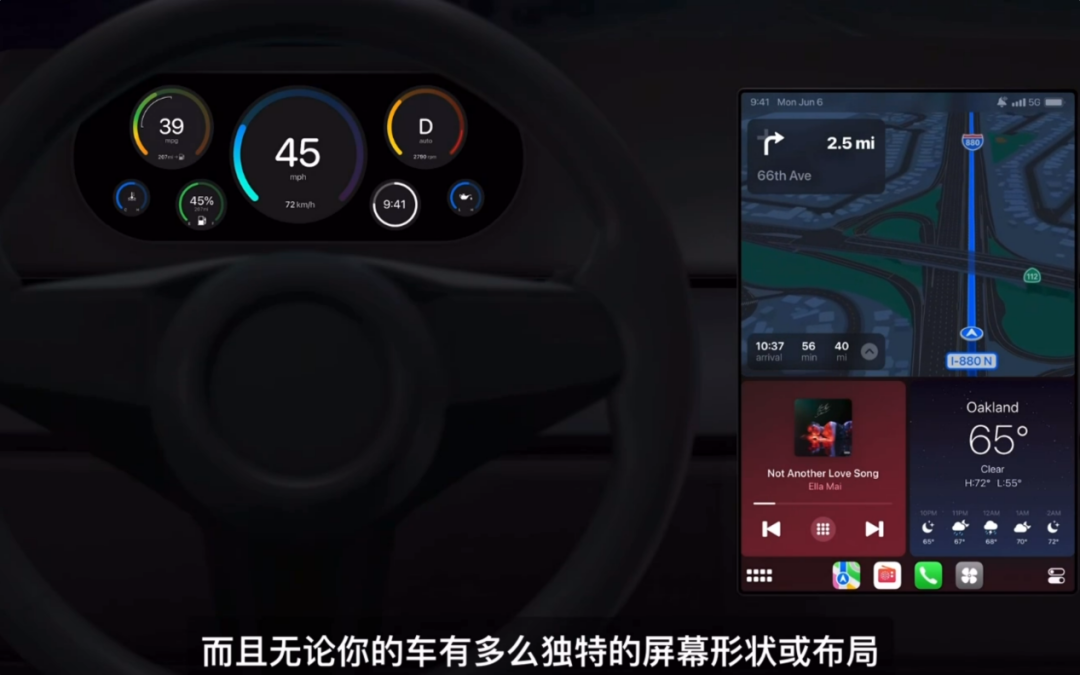

Careful scrutiny reveals that, in this demo video, Apple showcased a screen design that runs through the front row from left to right. On this entire screen, the dashboard, various card-style widgets, and the passenger entertainment screen are all clear at a glance. In the center bottom, there’s also a central control screen in the distinctive Apple design style, displaying various App and car control buttons.
Could what we see here be the closest thing to the so-called Apple Car prototype?
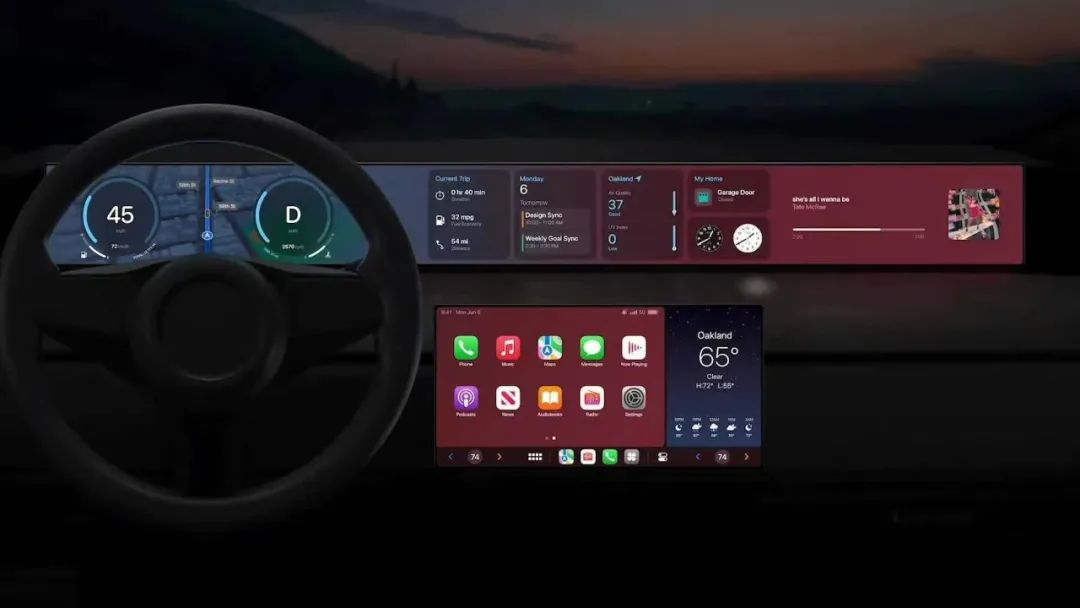
All kinds of vehicle controls, including air conditioning, cycle, steering wheel heating, seat heating/ventilation, and other functions are included.

Speaking of which, I noticed that there is a My Home card component in the various cards on the central control screen, showing that the current garage door is closed.
Linkage to Home Platform at WWDC22
The Home platform can be understood as the Apple version of the Xiaomi “Mi Home” smart home platform. Apple emphasized a major overhaul of the Home platform, representing the future Apple Car, as well as the new version of CarPlay we see now, with comprehensive IoT car-home connectivity capabilities.
Apple has made its move, and the pressure is now on Xiaomi.

Emily Schubert emphasized that the new version of CarPlay will be able to deeply “communicate” with interfaces such as instrument panels and center screens to display detailed vehicle status information such as speed, RPM, fuel level, and temperature, and iPhone widgets can also be displayed on the screen.
All of this is achieved in a private and secure way that protects user privacy after establishing a connection between the user’s iPhone and the vehicle.

Of course, this also includes various styles of interface information, from simulated traditional prototype pointers to advanced digital navigation interfaces, all available for users to choose and not limited by car brand during actual use.
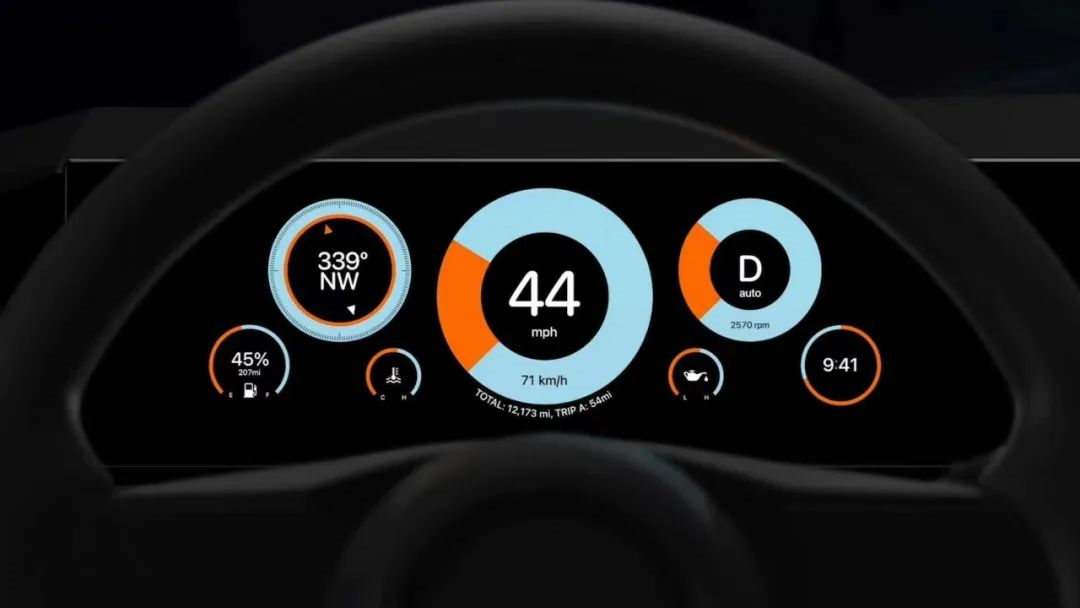
Looking at this, one suddenly realizes that this is not at all the same idea as the Android-based smart wearables opening up the third-party watch face market to users and designers. Apple’s UI/UX design aesthetic has long been recognized as quite advanced.
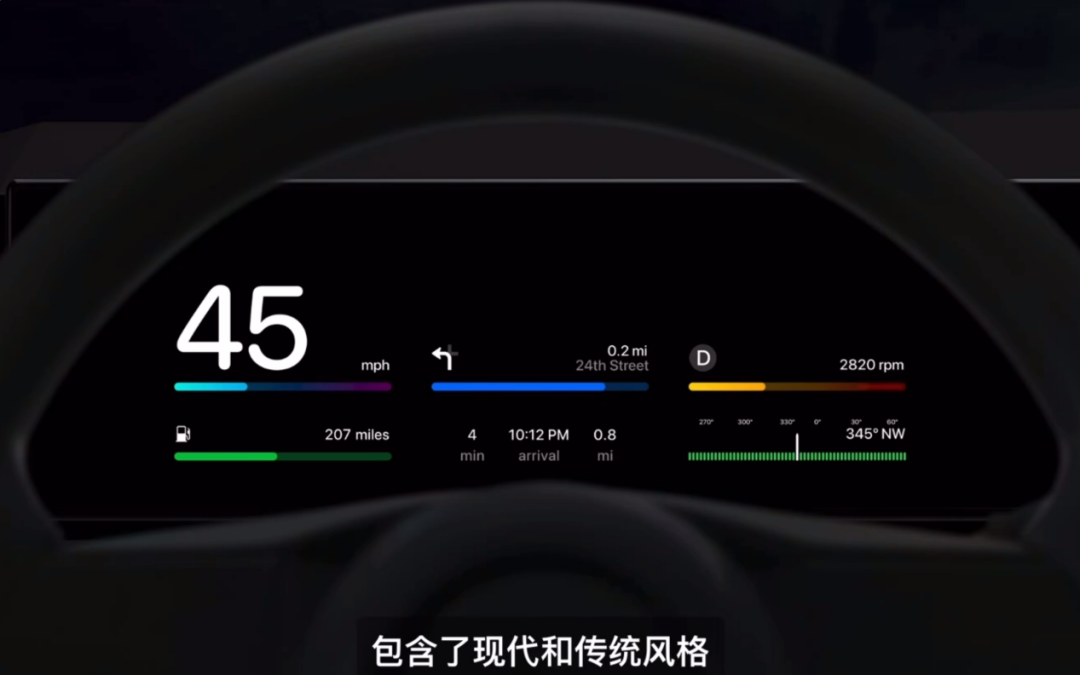

At the end of the video is the partner lineup, and after watching it, there are two feelings.
On the one hand, in the newly announced lineup, we did not see the BMW, who had been working very happily with Apple on CarKey and other aspects.
On the other hand, Apple has likely reached agreements with these announced partners to obtain deeper interfaces to achieve many of the body-level control functions mentioned earlier.
 ## So, who’s next to panic?
## So, who’s next to panic?
After the media colleagues and tech enthusiasts’ carnival, we still need to return to reality and think about the meaning behind it.
Here are some ideas that we want to present in a simple and intuitive Q&A format.
First, let’s borrow the great friend of GeekCar, Miss LeekBox’s today’s golden sentence about the new version of CarPlay:
GeekCar: What is the biggest significance of the new version of CarPlay?
A: In the early stage of automobile intelligence, whether it is Apple CarPlay or Baidu CarLife, they can be regarded as the second choice provided by technology giants for automakers and users. Seeing the domestic automobile industry rolling more and more, and the intelligent cockpit carrying a large proportion of the product power of various companies is also rolling up, it is actually a good thing for users brought by industry competition.
Let’s trace back from the beginning. If the statement that 79% of new car buyers in the United States only consider CarPlay-supportive models is true, can it actually indicate that among the cars sold in the domestic market in recent years, there has been no significant improvement in the intelligent cockpit experience?
In our opinion, the previous CarPlay’s ability boundary was too clear. This solution that relies on the native vehicle system for operation has a low bottom line experience and an equally low upper limit. As for the known information about the new version of CarPlay, the bottom line experience has been visibly significantly improved, but until more information is disclosed, we still hold reservations about how much the upper limit can be improved.
If a car was an information island earlier and moved towards intelligence, the first intelligent index was 1. The old version of Apple CarPlay is not a sustainable solution that can solve the fundamental problem with mapping. At most, it can only be counted as 1.5.
At present, whether it is a new force or a new strength, an independent brand or a traditional giant, everyone has rolled up to the index of 2.
The new version of Apple CarPlay can still bring a universal solution that emphasizes versatility, which is obviously more suitable for the competition environment across the ocean.
Some people may ask, why use the domestic market as an example? The world is not only China.
It’s true, but the world is too big, and the United States is not the only country in the world.
Finally, Emily Schubert has given a rough estimate of the progress. Multiple new car models to be launched in late 2023 will be equipped with the new version of CarPlay.
GeekCar: What is the biggest advantage of the new CarPlay?
A: Let’s use a small story to illustrate.
Surrounded by the entire GeekCar editorial team, only the editor-in-chief, Sid, and I are not iPhone users.
On the way to a team dinner, I chatted with our good friend @GeekCar Wang Tupu about why the iPhone and the Apple brand are so popular.
My conclusion is that Apple has not always been marketing its hardware, technology, and concepts to everyone. Instead, at the consumer level, Apple makes the iPhone an entry point, allowing users to slowly enter the Apple ecosystem, which has a double meaning in both the real world and the psychological level.
Here, users no longer need to worry about anything.
Regardless of how much the outside competitors and users are struggling on various battlefields, Apple users can sit back and relax. Because they know that what they are using is definitely the most trustworthy.
This recognition and trust can certainly be extended to potential users of the new CarPlay.
Therefore, it is more accurate to say that the equivalent usage habits, recognition of design, and even the sense of identification with Apple are being extended to the car, rather than simply mapping applications and functions into the car.
GeekCar: Who is the biggest competitor of the new CarPlay?
A: Is it Tesla and Musk? I don’t think so.
The biggest opponent of the new CarPlay will be CarPlay itself. Its past self and future self.
Apple’s official website already supports more than 600 car models that have CarPlay. Since its official release in 2014, CarPlay has accumulated a deep trust among its user base after experiencing those pioneering years. Even more valuable is the market’s macro-level understanding of CarPlay.

The new CarPlay is no longer the mapping car system that cannot leave a single screen, but today’s host factories are not the host factories that did not know the direction of the road during the early stages of intelligence. Regardless of the number, most car manufacturers and Tier 1 companies have clearly defined their goals and found their own ways of playing during this period.“`
To say the least, today’s OEMs are facing a strong supply chain integration and control ability, having their own autonomous driving technology, intelligent cockpit systems with high recognition degree, and a key chip technology system enterprise that could kill into their own territory at any time, while still being the world’s highest market value commercial company for a long time.
In this regard, it seems that automakers’ support for the new CarPlay version in their new cars after 2023 is more like a consideration of market factors.
How to play the game with automakers in this environment is a problem that Apple needs to face directly.
Although the previous road to building a car was definitely not smooth sailing, Apple’s choice of such a timing node to release signals to the industry in its own best way is worth the attention of any industry participant.
So who do you think is the most panicked now?

“`
This article is a translation by ChatGPT of a Chinese report from 42HOW. If you have any questions about it, please email bd@42how.com.
